Tesla Model 3 vs Hyundai Inster – Differences & prices compared
Compare performance, boot space, consumption and price in one view.
Find out now: which car is the better choice for you – Tesla Model 3 or Hyundai Inster?
The Tesla Model 3 (Hatchback) comes with a Electric engine and Automatic transmission. In comparison, the Hyundai Inster (SUV) features a Electric engine with Automatic transmission.
When it comes to boot capacity, the Tesla Model 3 offers 594 L, while the Hyundai Inster provides 280 L – depending on how much space you need. If you’re looking for more power, decide whether the 627 HP of the Tesla Model 3 or the 115 HP of the Hyundai Inster suits your needs better.
In terms of consumption, the values are 13.20 kWh per 100 km for the Tesla Model 3, and 14.30 kWh for the Hyundai Inster.
Price-wise, the Tesla Model 3 starts at 34300 £, while the Hyundai Inster is available from 20500 £. Compare all the details and find out which model fits your lifestyle best!
In a compelling showdown between the Tesla Model 3 and the Hyundai Ioniq 5, electric car enthusiasts have much to consider. The Model 3 impresses with its cutting-edge technology and impressive range, making it a leader in the EV landscape. Meanwhile, the Ioniq 5 offers a bold design and spacious interior, appealing to those who value comfort and style without compromising on performance.
Tesla Model 3
The Tesla Model 3 stands out in the electric vehicle market with its sleek design and impressive performance capabilities. It offers a seamless driving experience that combines advanced technology with minimalistic interiors, creating a futuristic feel on the road. Additionally, its range and charging infrastructure make it a practical choice for both city commuting and longer journeys.
details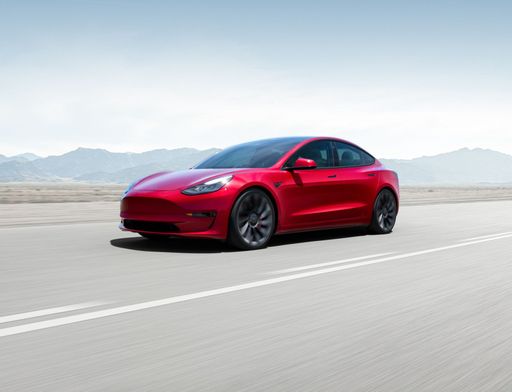 @ tesla.com
@ tesla.com
 @ tesla.com
@ tesla.com
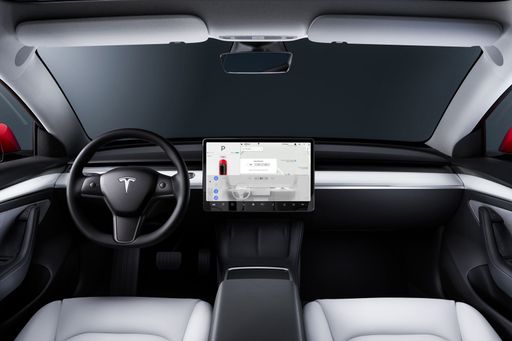 @ tesla.com
@ tesla.com
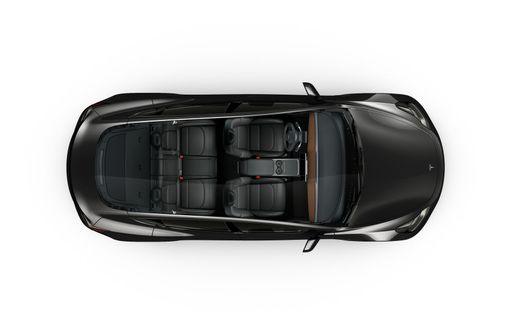 @ tesla.com
@ tesla.com
Hyundai Inster
The Inster has quickly captured the attention of automotive enthusiasts with its striking design and dynamic performance. This model seamlessly blends advanced technology with comfort, making it an ideal choice for both daily commutes and adventurous road trips. With its spacious interior and innovative features, the Inster promises an exhilarating driving experience that doesn’t compromise on practicality.
details @ hyundai.news
@ hyundai.news
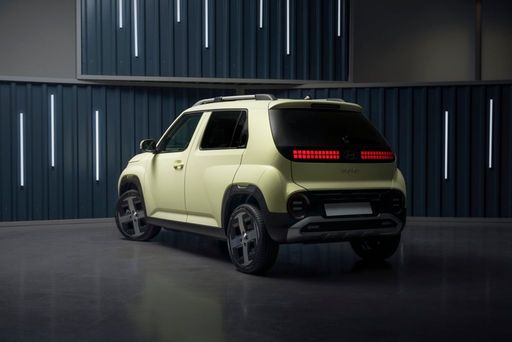 @ hyundai.news
@ hyundai.news
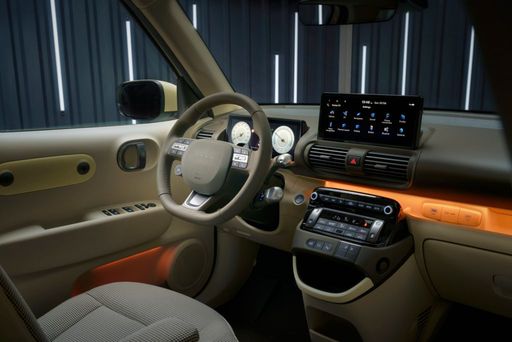 @ hyundai.news
@ hyundai.news
A Comparative Look at the Tesla Model 3 and the Hyundai Inster
As electric vehicles continue to revolutionize the automotive landscape, two contenders have emerged that cater to different segments of the market: the futuristic and performance-oriented Tesla Model 3 and the more urban-friendly Hyundai Inster. Both vehicles offer unique blends of innovation and practicality, but how do they stack up against each other when we delve into the technical details? Let's explore the strengths and considerations of the Tesla Model 3 and Hyundai Inster.
Performance and Power
The Tesla Model 3 is known for its high-performance capabilities. With power ratings ranging from 283 to a staggering 460 horsepower, this vehicle caters to those who seek exhilarating acceleration. The Model 3 can reach 0 to 100 km/h in anywhere from a rapid 3.1 seconds to a swift 6.1 seconds, depending on the variant. Additionally, it provides both rear-wheel and all-wheel drive options, enhancing its appeal to thrill-seeking drivers.
In contrast, the Hyundai Inster is more modest in its power offerings, with 97 to 115 horsepower under the hood. Its acceleration is more subdued, with times from 0 to 100 km/h ranging between 10.6 and 11.7 seconds. Front-wheel drive is standard, aligning with the vehicle's urban-centric design.
Battery and Range
The capacity of an electric vehicle's battery and its range are vital for potential buyers. The Tesla Model 3 shines in this aspect, offering varying battery capacities between 62 to 79 kWh, resulting in an impressive range of 513 to 702 kilometers on a single charge. This makes it an ideal choice for long-distance travelers.
The Hyundai Inster, while less powerful, provides adequate range for city dwellers and daily commuters. Its battery capacities range from 42 to 49 kWh, accommodating a driving range between 327 to 370 kilometers. This range is suitable for typical urban commutes and errands without frequent charging stops.
Dimensions and Practicality
Examining the interior space and dimensions, the Tesla Model 3 serves as a hatchback with ample room, seating up to five passengers comfortably. It also offers a generous trunk capacity of 594 liters, making it practical for both daily use and road trips.
The Hyundai Inster takes on the form of an SUV, yet it is more compact, seating four passengers. Its trunk space is considerably smaller, ranging from 238 to 280 liters, which might be a consideration for families or individuals needing more storage.
Innovation and Features
Both vehicles boast cutting-edge technology and sustainability, maintaining a CO2 efficiency class of A with zero emissions marveling enthusiasts of eco-friendly driving. From an innovation standpoint, the Tesla Model 3 stands out with its higher top speed, reaching up to 262 km/h, and its powerful torque of up to 723 Nm.
The Hyundai Inster offers a balance between functionality and innovation, with a top speed capped at 150 km/h and a torque of 147 Nm. Its lighter curb weight, ranging from 1380 to 1433 kg, makes it nimble and responsive in urban environments.
Conclusion
Deciding between the Tesla Model 3 and the Hyundai Inster ultimately boils down to the driver's needs and lifestyle. For those valuing performance and range, the Tesla Model 3 clearly leads the charge with its superior power and longer driving range. However, if maneuverability and city practicality are higher priorities, the Hyundai Inster stands as a strong contender with a smaller footprint and efficient design. Whether you prefer razzle-dazzle speeds or practical city cruising, both models represent the diverse possibilities in the future of electric vehicles.

|

|
|
|
|
Costs and Consumption |
|
|---|---|
|
Price
34300 - 50100 £
|
Price
20500 - 25800 £
|
|
Consumption L/100km
-
|
Consumption L/100km
-
|
|
Consumption kWh/100km
13.2 - 16.7 kWh
|
Consumption kWh/100km
14.3 - 15.1 kWh
|
|
Electric Range
513 - 702 km
|
Electric Range
327 - 370 km
|
|
Battery Capacity
62 - 79 kWh
|
Battery Capacity
42 - 49 kWh
|
|
co2
0 g/km
|
co2
0 g/km
|
|
Fuel tank capacity
-
|
Fuel tank capacity
-
|
Dimensions and Body |
|
|---|---|
|
Body Type
Hatchback
|
Body Type
SUV
|
|
Seats
5
|
Seats
4
|
|
Doors
5
|
Doors
5
|
|
Curb weight
1822 - 1929 kg
|
Curb weight
1380 - 1433 kg
|
|
Trunk capacity
594 L
|
Trunk capacity
238 - 280 L
|
|
Length
4720 - 4724 mm
|
Length
3825 - 3845 mm
|
|
Width
1850 mm
|
Width
1610 mm
|
|
Height
1431 - 1440 mm
|
Height
1575 - 1610 mm
|
|
Payload
303 - 333 kg
|
Payload
317 - 357 kg
|
Engine and Performance |
|
|---|---|
|
Engine Type
Electric
|
Engine Type
Electric
|
|
Transmission
Automatic
|
Transmission
Automatic
|
|
Transmission Detail
-
|
Transmission Detail
Reduction Gearbox
|
|
Drive Type
Rear-Wheel Drive, All-Wheel Drive
|
Drive Type
Front-Wheel Drive
|
|
Power HP
283 - 627 HP
|
Power HP
97 - 115 HP
|
|
Acceleration 0-100km/h
3.1 - 6.1 s
|
Acceleration 0-100km/h
10.6 - 11.7 s
|
|
Max Speed
201 - 262 km/h
|
Max Speed
140 - 150 km/h
|
|
Torque
420 - 660 Nm
|
Torque
147 Nm
|
|
Number of Cylinders
-
|
Number of Cylinders
-
|
|
Power kW
208 - 461 kW
|
Power kW
71 - 85 kW
|
|
Engine capacity
-
|
Engine capacity
-
|
General |
|
|---|---|
|
Model Year
2023 - 2024
|
Model Year
2025
|
|
CO2 Efficiency Class
A
|
CO2 Efficiency Class
A
|
|
Brand
Tesla
|
Brand
Hyundai
|
Tesla Model 3
Introduction to the Tesla Model 3
The Tesla Model 3 has quickly become a beacon of innovation in the world of electric vehicles (EVs), embodying a perfect blend of performance, technology, and sustainability. Known for redefining the electric car experience, the Model 3 stands as a testament to Tesla's commitment to pushing the boundaries of automotive design and engineering.
Design and Build
With its sleek fastback silhouette, the Tesla Model 3 is not only visually captivating but also aerodynamically efficient. Measuring at 4720 mm in length, 1850 mm in width, and 1441 mm in height, it optimally combines aesthetics with functionality. The Model 3 boasts a 594-litre boot space, offering ample room for everyday storage needs. Built with environmental efficiency in mind, its CO2 efficiency rating stands proudly at a perfect A, making it an ideal choice for the eco-conscious driver.
Powertrain and Performance
Under the bonnet, the Model 3 offers a diverse range of powertrains. It is available in both rear-wheel drive (RWD) and all-wheel drive (AWD) options, catering to different driving preferences. The electric motors deliver a remarkable power output ranging from 283 to 460 PS, translating to 208 to 338 kW. Depending on the variant, the Model 3 can accelerate from 0 to 100 km/h in a staggering 3.1 to 6.1 seconds. With a top speed between 201 and 262 km/h, the Model 3 promises an exhilarating driving experience.
Battery and Range
The Model 3 is equipped with a robust battery pack, available in capacities ranging from 62 to 79 kWh. This ensures an impressive electric range of 513 to 629 km on a single charge, catering perfectly to both city drivers and those who frequently embark on long-distance journeys. The energy consumption is between 13.2 to 16.5 kWh per 100 km, showcasing Tesla's efficiency in engineering cutting-edge EV technology.
Technological Innovations
The interior of the Model 3 is where technology takes centre stage. With its state-of-the-art autopilot feature, semi-autonomous driving is not just a promise but a reality. The vehicle continually updates over-the-air, ensuring that the software is always up-to-date with the latest features and improvements. Furthermore, the minimalist interior design, accentuated by a massive central touchscreen display, epitomises modernity and enhances the user experience with intuitive controls and navigation.
Cost Considerations
Given its advanced features and performance capabilities, the Model 3's price point ranges from €42,490 to €58,490. Monthly operating costs are estimated to be between €1,073 and €1,397, with per-kilometre costs between 42.9 and 55.9 cents, making it a competitively priced option within the premium EV market segment.
Conclusion
The Tesla Model 3 continues to lead the charge in the electric revolution, offering a compelling package of performance, innovation, and sustainability. For anyone seeking a modern, efficient, and technologically advanced vehicle, the Model 3 deserves serious consideration. With Tesla's groundbreaking vision and innovative engineering, this vehicle is not merely an investment in cutting-edge technology but also in a sustainable future.
Hyundai Inster
The automotive landscape continues to evolve, and at the forefront of this transformation is the Hyundai Inster, a dynamic model set to impress electric vehicle enthusiasts. As a compact SUV, the Inster embodies a blend of innovative technology, user-friendly features, and an eco-conscious design, making it a contender in the burgeoning electric vehicle market.
Powertrain and Performance
The Hyundai Inster is powered by an efficient electric drivetrain, offering two main battery options: a 42 kWh and a 49 kWh version. These options translate to power outputs of 97 HP and 115 HP, respectively, allowing drivers to choose based on their performance needs. The Inster accelerates from 0 to 100 km/h in 11.7 seconds for the 42 kWh variant, while the more powerful 49 kWh model reaches the same speed in an impressive 10.6 seconds, showcasing Hyundai's commitment to delivering engaging performance.
Range and Efficiency
One of the standout features of the Inster is its electric range. The 42 kWh model provides a range of 327 km, while the 49 kWh variants extend the range to 360 km and 370 km. This remarkable efficiency is complemented by consumption figures of 14.3 kWh/100 km for the 42 kWh variant and 14.9 kWh/100 km for the 49 kWh options. These figures ensure that the Inster is not only suited for city driving but also capable of handling longer journeys with ease.
Dynamic Design and Comfortable Interior
Aesthetically, the Hyundai Inster boasts a sleek and modern look, featuring a compact SUV profile that is both sporty and practical. The dimensions, measuring between 3825 mm and 3845 mm in length, with a width of 1610 mm and heights ranging from 1575 mm to 1610 mm, contribute to its spacious and comfortable cabin. The interior accommodates up to four passengers, making it an ideal choice for small families or couples.
Innovative Features
The Inster incorporates advanced technology geared towards enhancing the driving experience. Its automatic transmission, utilizing a reduction gearbox, ensures seamless gear shifts. Additionally, drivers will appreciate the array of smart features designed for convenience and connectivity, including advanced infotainment systems and driver assistance technologies.
Sustainability Credentials
Hyundai is dedicated to sustainability, and the Inster is a testament to this philosophy. With a carbon footprint of zero emissions, the Inster falls into the A CO2 efficiency class, making it a responsible choice for eco-conscious consumers. The absence of traditional emissions positions the Inster not only as an economical option but also as a proactive step towards reducing our environmental impact.
Conclusion
The Hyundai Inster stands out as a versatile and innovative solution in the electric vehicle segment. With a balanced approach to performance, efficiency, and sustainability, it caters to the modern driver’s needs and reflects the automotive industry's shift towards electrification. The future looks bright for the Inster, as Hyundai continues to pave the way for greener driving experiences.
Which drive types are available for the Tesla Model 3?
Available as .
The prices and data displayed are estimates based on German list prices and may vary by country. This information is not legally binding.
